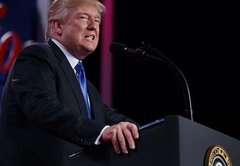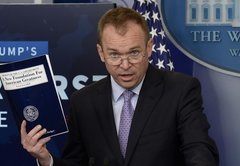Balance the federal budget 'fairly quickly'
Donald Trump
"It can be done. ... It will take place and it will go relatively quickly. ... If you have the right people, like, in the agencies and the various people that do the balancing ... you can cut the numbers by two pennies and three pennies and balance a budget quickly and have a stronger and better country."
Trump-O-Meter

Promise Broken



